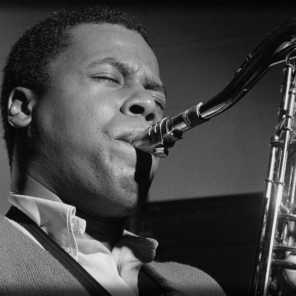This is a continuation of my Introduction to a method for practising for improvising musicians. For part 1 read this.
I divide the committed improviser's daily practise agenda into 3 parts:
GRID
Grid work develops the basic technical foundation of our vocabulary and, as a by-product, the beginnings of our sound. Our technical facility is based on our control within the horizontal Grid (time), and the vertical Grid (pitch).
Horizontally, we first need to develop precision
based on subdividing time into 2, 3, 4, 5, 6, 7 and 8. We do this at the
slowest tempo - for example, a metronome beat of 40bpm. We should start
each exercise daily at the slowest tempo. This ensures that we start
out with the maximum control over the muscles involved in playing, and
over time, we perfect that movement. We should then increase the rate
(the above subdivision system has this in-built), but only to the
maximum point where we can still play with precision.
A rule
of thumb with rhythm is to always keep your time reference/pulse as
macro, or widely spaced, as possible. You will develop a more solid and
reliable inner "clock" this way, and fast tempos become just a
subdivision of slower ones. Nobody has perfect "time", but learning to
subdivide very widely spaced pulses is a great way to stabilise your
inner sense of time.
Vertically: our "master" grid is the chromatic scale - the 12 notes from which all vertical structures are drawn. However the grid which predominates most music is the major scale. The major scale's ubiquitous feature in music makes it something we know internally even as non-musicians. Therefore the time we spend on the major scale quickly becomes mechanical repetition, and we should be careful to investigate intervals and patterns outside of our comfort zone in order to expand.
Other scales give us much more opportunity to expand our internal vertical grid. All scales can be considered as vertical grid options when looking to expand our vocabulary. With regular repetition, the work on ear/hand coordination will internalise these sounds into our aesthetic. The diminished scale and the melodic minor (ascending) are scales that have been incorporated extensively into jazz, especially in the last 20 years, and to fully utilise the sounds these offer us, much time should be given to developing our grid of these scales both melodically and harmonically.
CONTENT
Technical work is going to give us control, but there is little point unless we have something to say.
Developing
content is learning to make effective, expressive and logical musical
connections with the structures we have internalised. We could, of
course, just leave it to random chance, as all music we absorb should
feed our reservoir of content, but for the musician who seeks to find
their own voice, we can use an ear-training process directed by the
intellectual left brain in order to create an internalised vocabulary in
our right brain that reflects our aesthetic.
How to develop the internalisation process? It's all in the way we approach it. As mentioned above, music learned by ear is already taken in by the creative part of your brain - the right hemisphere. I encourage a process I call Linear Continuity. The simplest version of this would be to work generally moving through keys using a cycle of resolving 5ths. More on that later.
However, sometimes we need to internalise
music from visual/intellectual information, for convenience or to learn
new or complex parts. For those new to the process, it has to be forced
as soon as we've read through the piece or exercise a few times, and
remember how it sounds. Put the paper away. Play repeatedly what you
remember until you encounter a seriously blank moment, check the score,
repeat. You are not memorising - you're internalising.
Our
content comes through many routes. Mimicry and internalisation of
recorded performances that appeal to us, or fragments of them, provide a
window to how things work. Learning how our mentors phrase within a
certain groove, or navigate a sequence of chords is a big part of
developing the language, but ultimately, to develop our own voice, we
need to develop our own ideas within the rhythmic, harmonic and formal
structures that make up the repertoire we wish to perform. This is where
the left brain directs things, and feeds the right brain new sounds,
connections, combinations.
REPERTOIRE
This is where we put the pieces together to form a complete picture - a complete blueprint for improvised performance.
This is a tricky area, because we will use our left brain to analyse, understand, and connect the pieces of the composition we intend to play, yet we want to arrive at a point where we are not thinking, merely feeling our way through with our right brain. Otherwise we can not be in the moment, can not be a part of the debate, and we will only get in the way of the music.
Here you have to make the clear distinction between practising and playing. You are practising when you are thinking about the structures in order to be able to navigate them accurately and feed your right brain true sonic references. You are playing when you are navigating by feel alone. You can practice the piece 20 times, but then you should play the piece at least another 20 times. You could also try alternating, if you find yourself unable to internalise the structures. Until you make it your own, you can also always go back to a reference recording of the piece if such exists. Listen. Absorb it's logic. If it's your own piece, or you have no reference, write a few choruses of "improvisation" using a sequencer, and learn them.
Then fly! Enjoy the moment! Nobody wants to listen to people practising.





